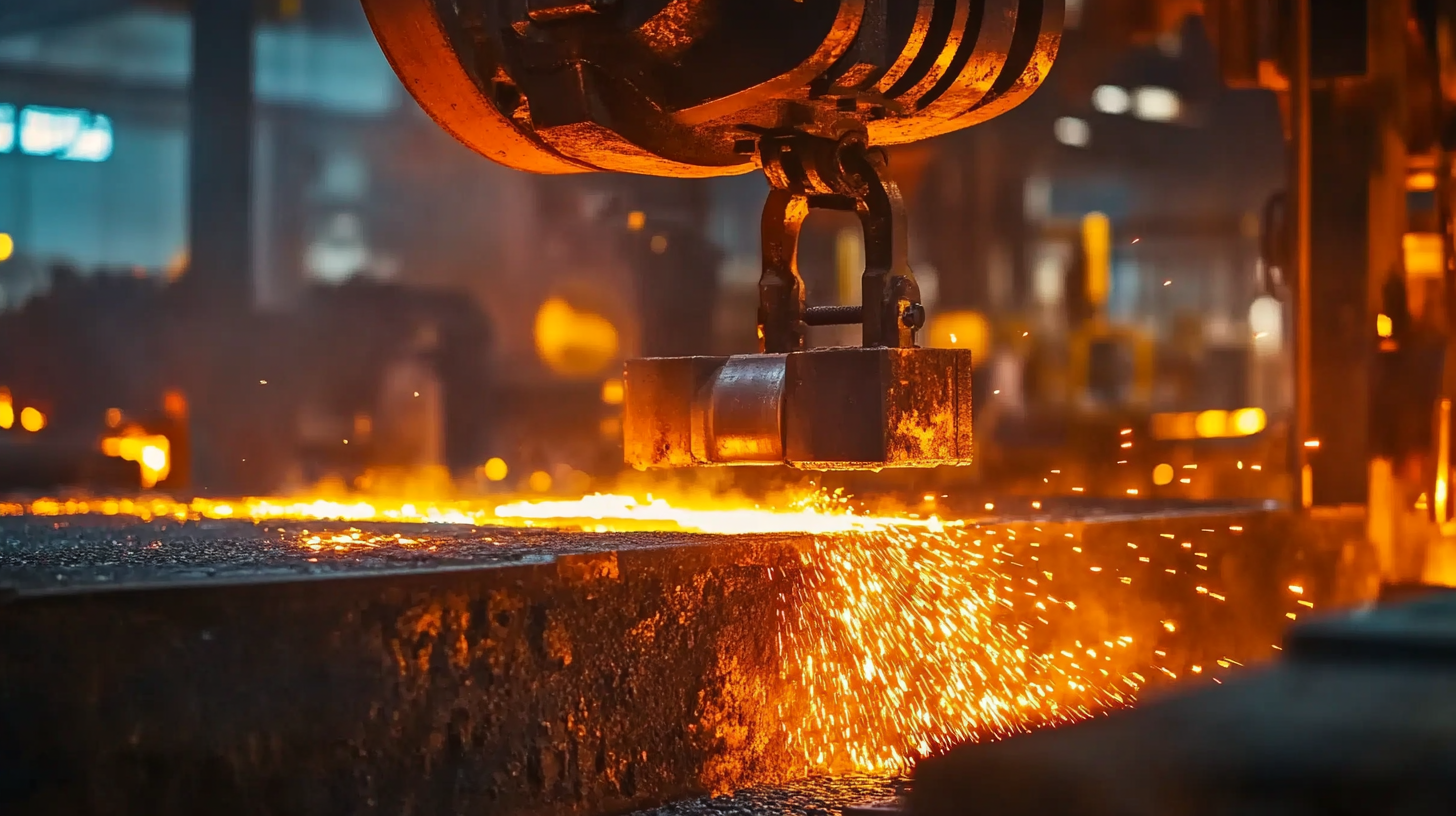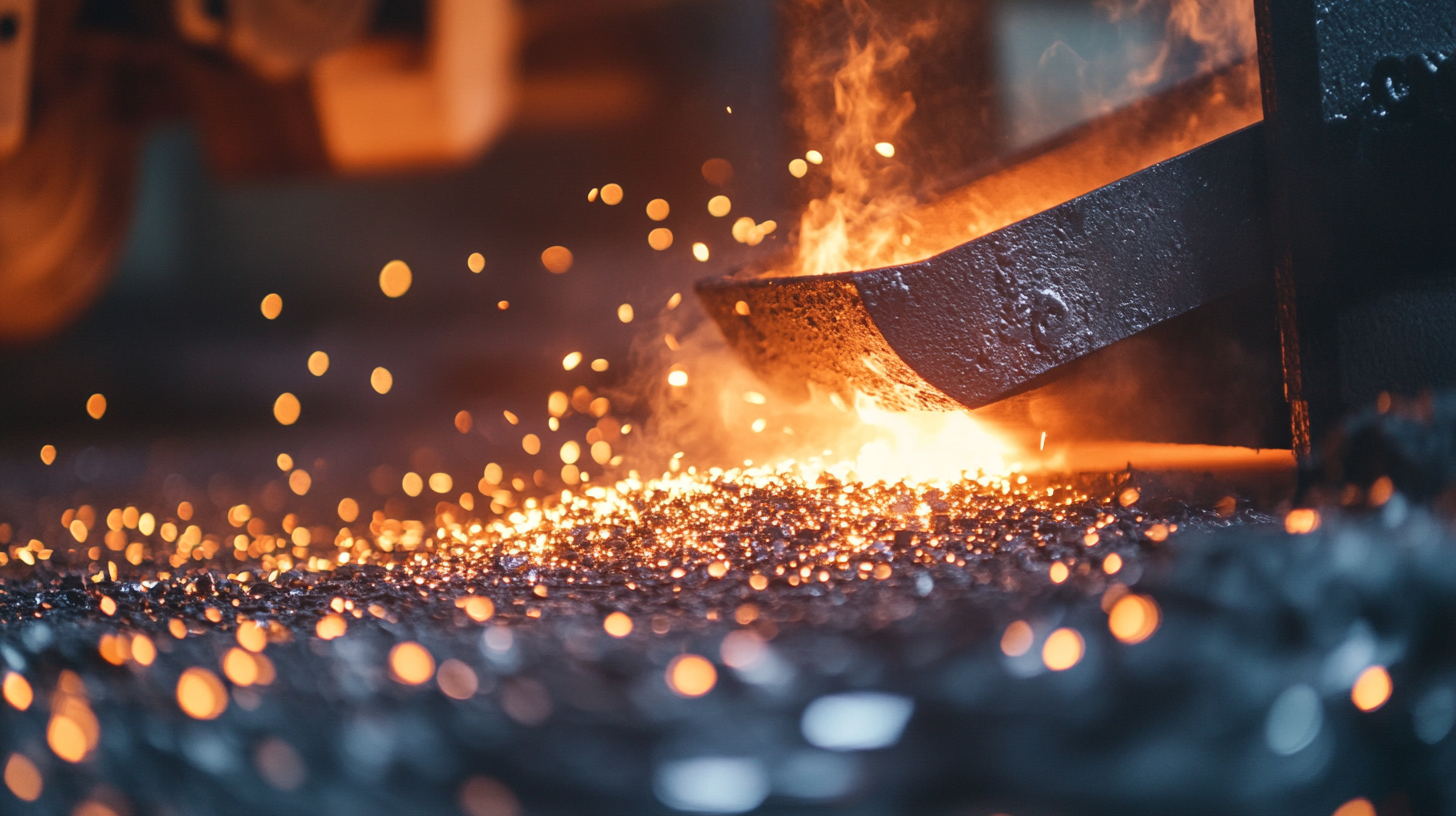 +86 180 0293 5268
+86 180 0293 5268






In today's fast-paced industrial landscape, the reliability and versatility of materials play a pivotal role in determining the success of various applications. Among these materials, stainless steel castings stand out due to their exceptional properties such as corrosion resistance, strength, and aesthetic appeal. However, despite their many advantages, there are still significant challenges associated with their production and utilization across different industries. From aerospace to automotive, and from construction to medical devices, understanding the problems linked with stainless steel castings is crucial for engineers and manufacturers alike. This blog will explore the top five real-world applications of stainless steel castings while also addressing the common issues encountered in these sectors, shedding light on how to overcome these obstacles to enhance performance and longevity.

In the aerospace industry, the demand for high-performance materials is paramount. Stainless steel castings play a crucial role in ensuring safety and reliability in various applications, from engine components to structural elements. According to a report by MarketsandMarkets, the aerospace casting market is projected to reach USD 6.1 billion by 2025, driven by the increasing need for lightweight and durable materials. Stainless steel castings, particularly those made with alloys such as 316L and 17-4 PH, offer excellent corrosion resistance and mechanical strength, making them ideal for applications subjected to extreme conditions.
Tip: When selecting stainless steel castings for aerospace components, ensure compliance with stringent aerospace standards like ASTM and AMS. It's essential to source materials that have undergone rigorous testing to guarantee safety and performance.
Moreover, the use of stainless steel castings is expanding in the aerospace sector due to their ability to withstand high temperatures and pressures. Components such as landing gear, turbine blades, and exhaust systems benefit significantly from their enhanced properties, with tensile strength often exceeding 1,200 MPa. As the industry focuses on improving fuel efficiency and reducing emissions, the lightweight characteristics of stainless steel castings further contribute to optimized aircraft designs.
Tip: Collaborating with certified suppliers who specialize in aerospace-grade stainless steel can significantly reduce risks associated with material failure and enhance overall project success.
Stainless steel castings have emerged as a vital component in the automotive manufacturing sector, providing exceptional durability and resilience to the most challenging environments. According to a recent report by the Steel Founders' Society of America, approximately 70% of automotive manufacturers are now integrating stainless steel castings into their production lines, particularly for critical parts such as exhaust systems and structural components. These castings not only enhance the longevity of vehicles but also improve performance by reducing weight without sacrificing strength.

To maximize the benefits of stainless steel castings, manufacturers can utilize advanced techniques such as investment casting, which allows for intricate designs and tighter tolerances. This method can produce components that exhibit superior mechanical properties, reducing the need for additional machining and ultimately lowering production costs. Additionally, implementing regular maintenance practices can further extend the lifespan of these castings, ensuring that vehicles remain reliable over time.
Tip: When selecting stainless steel for casting, consider the specific grades that offer enhanced corrosion resistance and wear properties, such as 316L or 17-4 PH. These materials can significantly improve the performance of automotive components, making them better suited for harsh operating conditions. Regularly reviewing the latest industry reports can also provide insights into emerging trends and technologies in stainless steel applications, helping manufacturers stay ahead in the competitive market.
Stainless steel castings play a pivotal role in the energy sector, significantly enhancing operational efficiency and reducing costs. As industries increasingly seek durable and corrosion-resistant materials, stainless steel castings emerge as a key solution for manufacturing essential components.
 These castings offer the advantage of high strength and resilience, making them ideal for handling extreme conditions, such as those found in power generation facilities and renewable energy applications. The versatility of stainless steel not only extends the lifespan of components but also minimizes maintenance costs, leading to substantial savings for energy companies.
These castings offer the advantage of high strength and resilience, making them ideal for handling extreme conditions, such as those found in power generation facilities and renewable energy applications. The versatility of stainless steel not only extends the lifespan of components but also minimizes maintenance costs, leading to substantial savings for energy companies.
Recent developments in strategic partnerships within the energy sector highlight the growing importance of innovation and efficiency. For instance, a recent significant investment in a leading energy technology company demonstrates the shift towards collaborative efforts aimed at improving resource management and sustainability. By leveraging advanced stainless steel casting techniques, these companies can optimize their product lines and enhance performance, ultimately driving down operational expenses. As the energy landscape evolves, the role of stainless steel castings will undoubtedly become more integral in supporting the transition to more efficient and cost-effective solutions.
Stainless steel castings have become integral to the medical device industry, primarily due to their exceptional hygiene and reliability. According to a report by Research and Markets, the global stainless steel market for medical applications is projected to reach USD 2.3 billion by 2025, reflecting a growing recognition of stainless steel's antimicrobial properties. Its inherent resistance to corrosion and staining makes it an ideal material for surgical instruments, implantable devices, and other critical equipment that demand the highest hygiene standards.
Manufacturers in the medical sector leverage stainless steel castings to create durable and precision-engineered products. For example, a study in the Journal of Materials Science emphasized that stainless steel can withstand extreme sterilization processes, including autoclaving, without compromising structural integrity. This reliability is essential for ensuring patient safety and operational efficiency in hospitals and clinics. Moreover, the versatility of stainless steel castings allows for innovative designs and configurations, enabling the production of complex devices tailored to meet specific medical needs, further advancing the field of healthcare technology.
| Application | Industry | Key Benefits | Usage Example |
|---|---|---|---|
| Surgical Instruments | Medical | High hygiene, durability, corrosion resistance | Scalpels, forceps |
| Dental Tools | Dental | Sterilization, strength | Dental scalers, curettes |
| Implant Devices | Orthopedic | Biocompatibility, mechanical strength | Hip and knee implants |
| Pharmaceutical Processing Equipment | Pharmaceutical | Resistance to harsh chemicals, purity | Mixers, reactors |
| Food Processing Equipment | Food & Beverage | Non-reactive, easy to clean | Conveyor systems, tanks |
In marine engineering, the use of stainless steel castings has become increasingly crucial in addressing the relentless challenges posed by corrosion and harsh environmental conditions. According to a report by Grand View Research, the global marine industry is projected to reach a value of $150 billion by 2025, driven partly by advancements in materials that enhance durability. Stainless steel, particularly grades like 316 and 317, offers exceptional resistance to saline environments, making it ideal for components such as pumps, valves, and other critical marine hardware.
Corrosion can significantly affect the longevity and performance of marine structures, with estimates suggesting that corrosion costs the marine industry around $9 billion annually. Stainless steel castings not only provide long-term solutions but also contribute to reduced maintenance costs and downtime. Their robustness ensures that vessels can operate safely and efficiently, especially in demanding offshore applications. As the marine sector innovates to combat environmental challenges, the role of high-quality stainless steel castings will likely grow, helping to protect not just equipment but also marine ecosystems.
